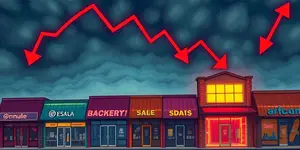
As global markets navigate shifting economic tides, the shape of the yield curve has emerged as a powerful signal for investors. When long-term and short-term bond yields converge, traditional fixed-income strategies often lose their edge. In this environment, bond proxies—equity sectors that mimic bondlike income—rise to prominence, offering stable income and lower volatility in uncertain times.
A flattening yield curve occurs when the difference, or spread, between short-term and long-term bond yields narrows significantly. Instead of the typical upward slope, investors see similar returns across maturities, undermining the reward for locking funds away for decades.
This phenomenon can be driven by two main forces:
In mid-2025, for instance, the 2-year U.S. Treasury yield hovered around 4.0%, while the 10-year yield sat at 3.2%—a classic sign of curve flattening and even inversion.
Recent data paints a complex picture. By May 2025, U.S. inflation measures showed moderation: headline CPI at 2.4% year-over-year and core CPI at 2.8%. The Federal Reserve’s forward guidance suggested two rate cuts by year-end, reflecting a more dovish monetary stance.
Bond market performance, however, remains mixed. The Core Bond Index recorded a modest 1% gain in 2024, following a 5.3% climb in 2023 and a harsh 13% loss in 2022. These swings underscore the challenges faced by bond investors in a flattening environment.
When traditional bonds lose their relative allure, investors often pivot to bond proxies—assets with defensive income characteristics similar to fixed income. Common categories include:
These sectors typically deliver consistent dividend yields and lower beta compared to broader equities, making them attractive when bond yields offer little compensation for duration risk.
A flattening curve reduces the premium for bearing long-term interest rate risk, prompting investors to reassess the value of long-duration bonds. Bond proxies step into the spotlight for several reasons:
When a 30-year Treasury yields only marginally more than a 2-year note, the argument for locking up capital for decades weakens. At the same time, utility dividends or REIT payouts become more compelling.
While bond proxies shine in a flattening scenario, they are not without risks. Key considerations include:
Interest Rate and Tariff Risks: Mid-2025 developments around tariffs and geopolitical tensions can inject volatility even into defensive sectors.
Duration Exposure: Equity proxies still carry sensitivity to rate moves, especially REITs with high leverage.
Credit and Sector Shifts: Investors may rotate toward corporate credit or intermediate bond maturities should curves steepen unexpectedly.
Successful navigation of a flattening curve involves a blend of creativity and discipline. Market participants often consider these strategies:
Adapting to a changing yield landscape requires careful monitoring of Fed guidance, inflation trends, and real-time curve movements. Investors should stay nimble, ready to adjust positions as economic signals evolve.
A flattening or inverted yield curve has historically foreshadowed economic slowdowns. While not an infallible predictor, many recessions in modern history were preceded by such curve dynamics.
However, a flat curve can also reflect market confidence in stable inflation or a belief that central banks will manage growth without dramatic rate shifts. Thus, interpretation depends on context—whether the flattening is driven by policy tightening or by benign growth expectations.
By synthesizing yield curve signals with sector fundamentals, investors can craft portfolios that capture income opportunities without overextending on duration. Staying informed and flexible remains crucial as markets respond to policy decisions and economic data.
In a world where the yield curve may signal both risk and opportunity, bond proxies provide a strategic tool for those seeking defensive yield and capital preservation. As flattening continues to shape market dynamics, these proxy sectors deserve a central role in forward-looking portfolios.
References













